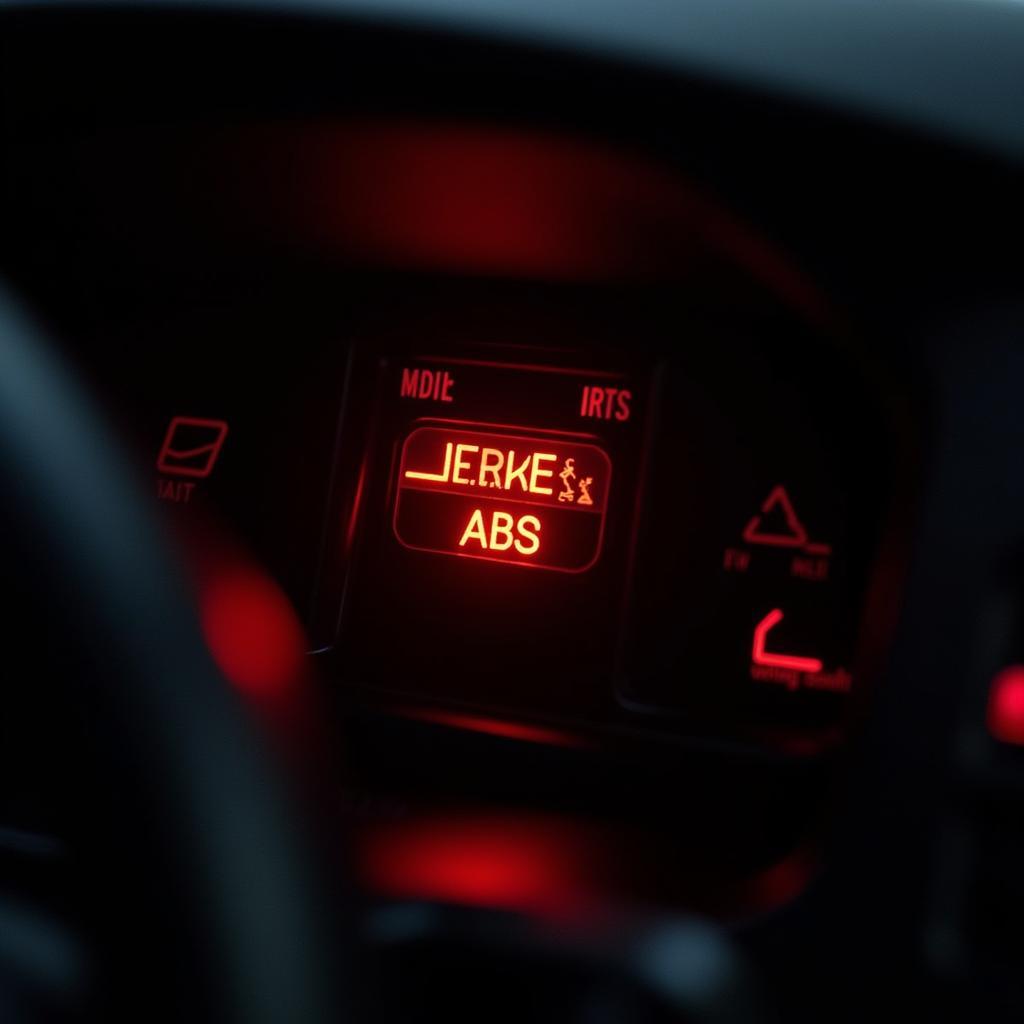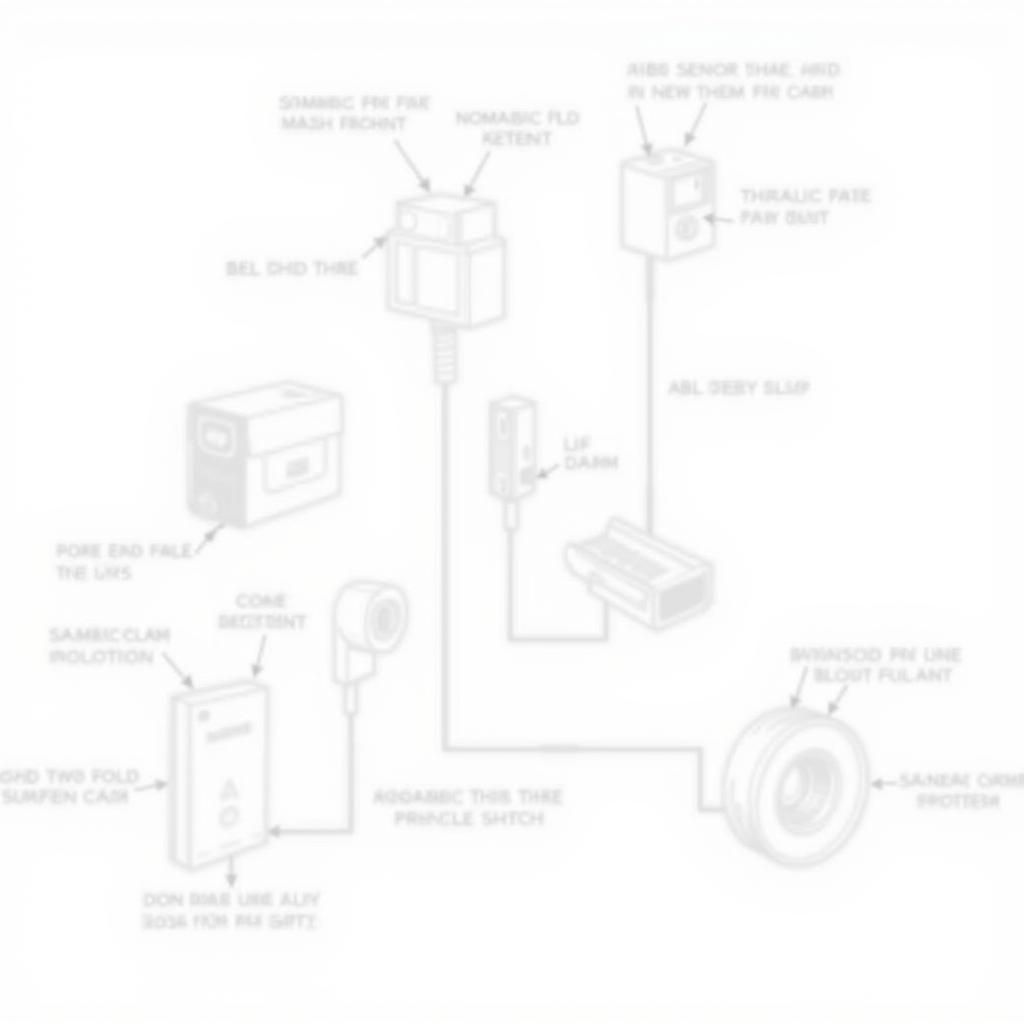The dreaded ABS and brake warning light illuminating your dashboard can be a cause for concern. Understanding why these lights activate and how to address the issue is crucial for maintaining your vehicle’s safety and performance. This guide provides a comprehensive overview of the ABS and brake warning light system, troubleshooting tips, and potential solutions.
The appearance of both the ABS and brake warning light simultaneously often indicates a more serious problem than just a single illuminated light. For example, it could point to issues with the brake fluid level, a malfunctioning ABS module, or even problems with the brake lines themselves. Don’t ignore these warnings. audi a4 abs and brake warning light provides specific information regarding this issue in Audi A4s.
Understanding the ABS and Brake Warning Lights
The brake warning light is a general indicator of a problem within the braking system. This could range from low brake fluid to worn brake pads. The ABS light, on the other hand, specifically signals an issue with the Anti-lock Braking System (ABS). The ABS prevents wheel lock-up during hard braking, allowing the driver to maintain steering control.
Why are Both Lights On?
Having both the ABS and brake warning light illuminated suggests a potential problem affecting both systems. This could be due to several factors:
- Low Brake Fluid: Perhaps the most common reason, low brake fluid can trigger both lights. This is a serious issue as it directly impacts braking performance.
- Faulty ABS Sensor: A malfunctioning ABS sensor can disrupt the ABS system and trigger both warning lights.
- ABS Module Issues: The ABS module controls the entire system. A failing module can lead to various problems, including the illumination of both warning lights.
- Brake Line Problems: Leaks or damage to the brake lines can cause a significant drop in brake fluid pressure, activating both lights.
 ABS and Brake Warning Lights Illuminated on Car Dashboard
ABS and Brake Warning Lights Illuminated on Car Dashboard
Troubleshooting ABS and Brake Warning Light Issues
If you’re faced with both warning lights, it’s important to take action promptly. Here’s a step-by-step guide to help you troubleshoot the issue:
- Check Brake Fluid Level: Inspect the brake fluid reservoir. If the level is low, top it off with the correct fluid type specified in your owner’s manual. If the fluid level drops rapidly after topping it off, suspect a leak.
- Inspect Brake Lines: Visually check the brake lines for any signs of damage, leaks, or kinks.
- Check ABS Sensors: While visually inspecting the ABS sensors might not reveal much, you can check the wiring for damage or loose connections.
- Scan for Diagnostic Trouble Codes (DTCs): Using an OBD-II scanner, retrieve any stored DTCs related to the ABS and braking system. These codes can pinpoint the specific problem area. You can find more information about specific vehicles, such as the Toyota Yaris, by searching for queries like “toyota yaris abs and brake warning lights”.
 Mechanic Checking Brake Fluid Level in Car
Mechanic Checking Brake Fluid Level in Car
Remote Diagnostics and Software Solutions
In today’s automotive landscape, remote diagnostics and software solutions play a vital role in addressing complex vehicle issues. By utilizing advanced diagnostic tools and software, technicians can remotely access a vehicle’s computer system, analyze data, and even reprogram modules to resolve specific problems. For example, a faulty ABS module might require a software update, which can often be performed remotely, saving time and money. This technology offers a convenient and efficient way to diagnose and repair ABS and brake system issues, even for vehicles located in remote areas. You might find specific resources, like 2003 corolla abs and brake warning lights on, that address particular car models and years.
When to Seek Professional Help
While some troubleshooting steps can be performed at home, it’s crucial to know when to seek professional help. If you’re unsure about any aspect of the diagnostic process or if the problem persists after initial troubleshooting, consult a qualified mechanic. Attempting complex repairs without the necessary expertise can further damage the braking system and compromise your safety. Some problems, like those experienced in older vehicles, may require specialized knowledge. For example, 93 gmc vandura abs and brake warning lights on can provide insight for owners of that specific model.
Conclusion
Addressing ABS and brake warning light issues is crucial for ensuring your vehicle’s safety and optimal performance. By understanding the potential causes, following the troubleshooting steps outlined above, and seeking professional help when necessary, you can effectively address these concerns and get back on the road with confidence. Remember, ignoring these warnings can lead to serious consequences, so prompt action is always recommended. For specific truck models, resources like abs and brake warning light on on my 2003 silverado can be helpful.


